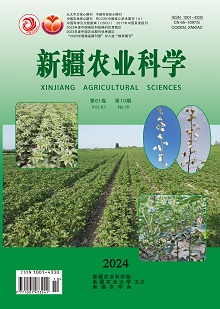【Objective】 Asparagus known as the 'king of vegetables' is the edible tender stem of the asparagus officinalis in the lily family, so this project aims to clarify the two varieties of asparagus transcriptional pathway and metabolism components.The results of this study has provided theoretical basis for in-depth evaluation of nutritional value, development and utilization of germplasm resources and variety breeding of asparagus. 【Methods】 A comparative metabolomic study was carried out on the young stems of two varieties of Galande and Jade Pearl asparagus by UPLC-MS and the transcriptional pathway and metabolic components of asparagus were comprehensively understood by comparing the types and contents of metabolic components. 【Results】 A total of two hundred and thirty-five different metabolites were screened out accounting for 13.03% of the total metabolites, including fifty-three flavonoids, thirty-nine amino acids and their derivatives, thirty-four phenolic acids, twenty-one lignans, twenty alkaloids, twelve lipids, eight organic acids, seven nucleotides and their derivatives, seven terpenoids, six vitamins, five steroids, four sugars, three coumarins, two ketones, one quinone, one aldehyde, and twelve others. The cyanidin-3-O-galactoside, gallocatechin-(4α→8)-gallocatechin, syringin, sinapine, 2-acetyl-5-methylfuran and quercetin-3-O-sambubioside were higher than those of galactoside. Golande had a high content of glucosyl 5, 8-dihydroxy-2, 6-dimethylocta-2, 6-dienoic acid, N-feruloyl cadaverine, acteoside, 1-O-(6' -o-feruloyl acid) glucoside, 3-O-caffeoyl quinic acid and timosaponin A3-glucoside. 【Conclusion】 Through enrichment of two hundred and thirty-five kinds of metabolites, the main biosynthesis pathways of secondary metabolites include amino acids, cofactors and flavonoids.

